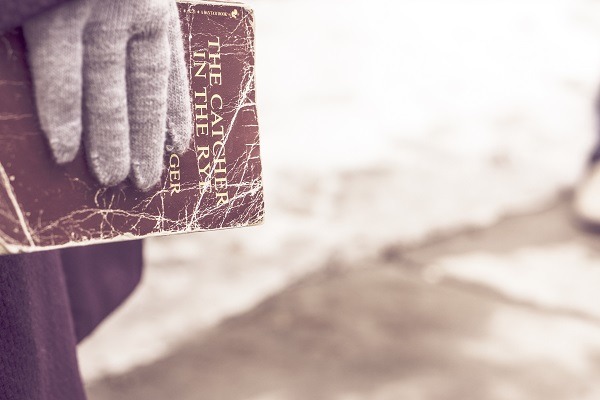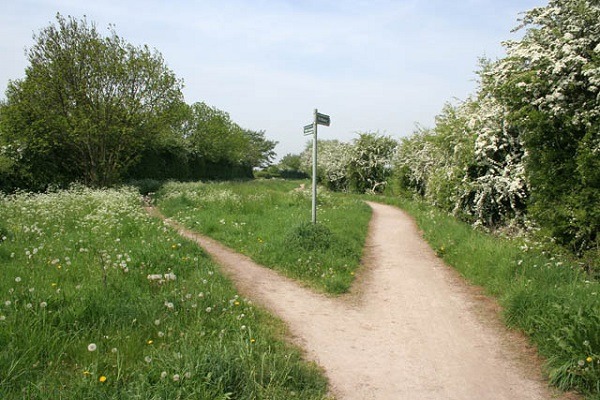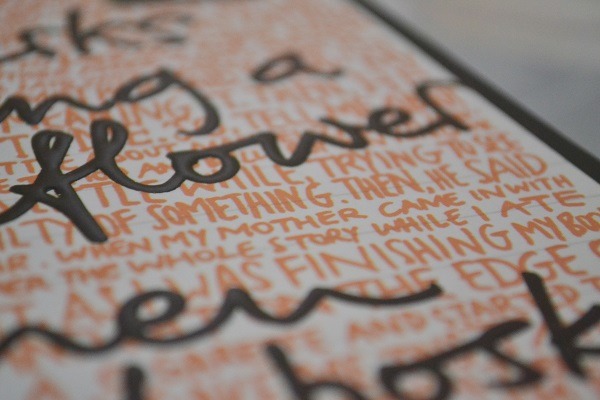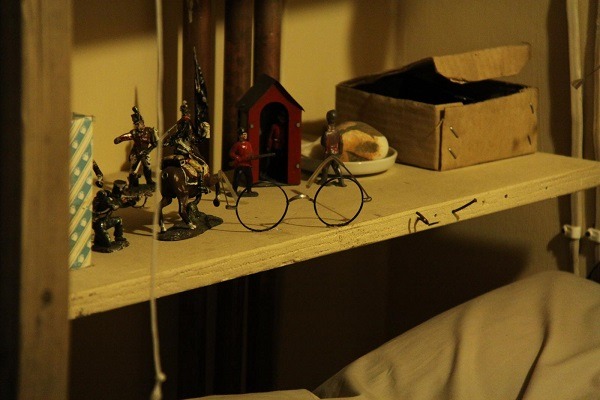It’s a good time to be an author of Young Adult fiction. Thanks to the constantly evolving way people consume literature, in recent years the genre has shed a lot of the stigma it usually carries.
It’s no longer automatically dismissed as sub-standard or a cop-out, and its audience is one of the widest-ranging and most actively engaged that an author could hope to have.
For YA writers, though – especially those new to the genre or to writing itself – there’s a downside to this surge in popularity: the amount of competition it has produced. How can you make sure your story is unique, relevant, and compelling enough to stand out from the myriad other YA books on the market?
Unfortunately, there’s no simple answer to this question. But there is one important thing to remember when writing for young adults: the key to a great YA novel is that it’s familiar enough to be relatable, yet foreign enough to be entertaining.
To achieve this delicate balance, you’ll have to pay particular attention to the issues and themes that drive your narrative and form the core of your story. And, as in all literature, those issues and themes will all stem from one thing: conflict.

Conflict in YA Fiction
Most people remember their teenage years as a time rife with conflict – both internal and external, small- and large-scale. As a young adult, change is afoot in every aspect of life. Bodies, minds, emotions, and social situations are in a constant state of flux, so conflict in one form or another is unavoidable.
Fortunately, this turbulent and emotionally-charged period of life can make for some great reading! Characters in YA fiction are always young people themselves, so the universal conflicts of youth inspire the genre’s stories and connect its characters with readers.
In order to really engage your audience as a YA author, you’ll need to write plenty of conflict, and you’ll need to write it well.
Read on for some effective ways to create and explore conflict in YA fiction.
1. Focus on themes of identity
Identity and sense of self are hugely important themes in YA literature. As every writer and reader knows first-hand, adolescence is a time of self-discovery; you’re growing up, learning more about the person you are, and beginning to make active decisions about yourself and your life.
While basically every YA book on the market deals with themes of identity and self, it’s often helpful to refer to ‘old-school’ YA authors like Judy Blume, who have been utilising these themes for decades – and whose novels are still popular today.
Are You There God? It’s Me, Margaret is perhaps Blume’s most classic example of a teenage identity novel.
Margaret, a girl entering her teens with a confused religious heritage, is struggling to make up her mind about her own conflicting beliefs and values, while also dealing with the many changes and challenges that accompany the transition into adulthood.
Salinger’s Catcher in the Rye is another early example of what we know today as ‘YA lit’. While its protagonist, Holden Caulfield, may not seem to undergo the same kind of maturing transformation we commonly see in today’s popular YA fiction, his attitude towards the world around him and the subsequent conflict he experiences are still highly relevant to a YA audience.
In a story told from Holden’s perspective, readers (both in Salinger’s day and today) are afforded a glimpse into the complex state of mind and internal journey of teenagers hovering in between childhood and adulthood.

In your own YA fiction, your characters must undergo this same journey into the self. You need to give them cause to explore who they really are and who they want to be.
Have them question their morals, their ambitions, their passions, their place in the world; have their confidence shaken and repaired, their idea of themselves reconsidered, and their view of life turned upside down.
To make these internal conflicts realistic and engaging for readers, look back at some classic YA books that get to the heart of the teenage identity crisis, and reflect on your own experiences of growing up and finding yourself.
Have your characters ask themselves the same questions you asked yourself, once upon a time:
- What do I want to do with my life? What sort of study, work, lifestyle, family, and personal goals do I have?
- What are my key beliefs and values? Are they the same as the ones I was brought up with, or are they changing?
- Who are the most important people in my life? Who are my real friends? What is my place in society and the world at large?
- What sort of person am I? If I could become a stranger and meet myself, would I like myself? Why or why not?
This may all sound fairly simple, but unfortunately, that’s not all you need to do! While an internal identity crisis is arguably the most essential young adult conflict, it doesn’t make much of a story on its own.
Like real life, it needs to be accompanied by even more conflict and complications, so let’s take a look at some further forms conflict can take in YA fiction.

2. Ensure there are decisions to be made
Decision-making is a defining aspect of the transition between youth and adulthood. Like adolescents in the real world, your characters should tread that fine line between dependence and independence, learning how to forge their own way in the world with less and less guidance from those older and wiser.
In order to explore this process through your characters, you’ll need to give them some important decisions to make.
You can explore both the potential and actual consequences of these decisions, developing your characters through their thinking and reasoning and your narrative through the results of their thoughts and actions.
Conflict, here, can be both internal and external. As mentioned above, your characters might wrestle with their sense of identity, struggling with a moral or personal dilemma; the decisions they go on to make can spark further conflict with the world around them.

Some examples of the kinds of decisions your characters may face include:
- Personal decisions, either:
- Major, in which your character knows the decision will influence the course of their future; or
- Minor – small or seemingly insignificant choices that end up strongly impacting subsequent events and situations.
- Moral decisions, which force your character to question their sense of what is right and wrong.
- Sacrificial decisions, in which your character must sacrifice something in order to achieve or attain something else.
- Double-sided decisions, in which any choice will have both positive and negative consequences – making the decision a lot less clear-cut for your character.
One important thing to remember: as an adult writing from a teen’s perspective, it’s vital not to underestimate your characters’ intelligence or capacity for reasoning.
While young adults do tend to make more irrational or ill-informed choices than their fully matured counterparts, this doesn’t mean they don’t have a reason for the decisions they make and the actions they take.
You’ll win no fans and do your story no favours by misrepresenting your teenage characters – and, by extension, misunderstanding your target audience. You’re writing primarily for young people, after all, so make sure you consider them carefully and fairly through your characters.

3. Create turning points for your characters
Most people have experienced a life-altering event or crisis at some stage or another. In your formative years, this kind of situation is especially significant; it has the potential to drastically alter the course of your life and shape the person you’ll become.
Since YA novels are primarily about transition and coming-of-age, a ‘turning point’ in a character’s life is the perfect vehicle to create conflict and drive the story.
Throw your protagonist into a situation from which they can’t possibly emerge unchanged. Disrupt their everyday life with an event that, whether negative or positive, will lead to major character development as you explore how they react to and deal with it.
Let the story ebb and flow the way a real life would, encompassing all the ups and downs of growing older.
There are several different ways a turning point can be incorporated into your narrative. You can ‘begin at the beginning’, as it were, introducing your character going about their regular life before creating disruption and conflict in the form of a significant event.
(Be sure not to leave it too long before exploring said event, though – you don’t want to lose readers with a drawn-out, overly slow-moving introduction.)

Alternatively, you might utilise a turning point as the opener to your story. Markus Zusak’s much-acclaimed novel The Book Thief employs this technique to introduce the story’s protagonist and her journey.
Liesel Meminger experiences the trauma of her brother’s death and her mother’s departure as she is delivered to foster carers in the heart of wartime Germany. This upheaval sparks a series of further events and conflicts, all of which shape Liesel’s life and identity as well as framing the narrative.
(It’s interesting to note that The Book Thief is set against the backdrop of a much larger conflict – the largest kind of conflict you can get, in fact: a world war. See Section 4 below for more about exploring large-scale conflict in YA fiction.)
Finally, there’s also the option of simply alluding to the defining event at first, exploring its effect on your characters before slowly unravelling the threads that led them to where they are now.
A great example of this method is Stephen Chbosky’s The Perks of Being a Wallflower, which sees Charlie, its protagonist, slowly coming to terms with a traumatic event from his past – the details of which aren’t fully grasped by Charlie or the audience until towards the end of the novel.
Whichever way you choose to explore a life-altering event, be sure that it successfully drives both your narrative and your character development. Events thrown in for shock value are of no narrative use – not unless they provoke and explore a change in your protagonist’s emotions, actions, world-view, or situation in life.

4. Explore feelings of oppression, rebellion, and misunderstanding
Whether the feeling is justified or a little exaggerated, most young people have felt as if they’re being oppressed and persecuted – or at least misunderstood – by the world around them.
These feelings are often shunned by elders as immaturity and the typical rebellion of youth, which just serves to add more fuel to the fire!
But it’s this very fire you’ll need to feed if you want to portray conflict on a larger scale. If you’re choosing to write YA genre fiction – fantasy, for example, or dystopian sci-fi – conflict becomes even more important to your narrative, as the story will be a little more plot-driven than real-world YA fiction.
That’s not to say that themes of rebellion and misunderstanding are misplaced in straightforward YA. Rather, it’s that such themes are at their most effective when driving the conflict of a large-scale, plot-focused series – and in YA literature, this usually means genre fiction.

In Suzanne Collins’ Hunger Games novels, for example, teenage feelings of oppression and injustice are magnified and projected onto the series’ dystopian, totalitarian setting.
By placing a young character at the helm of a nationwide rebellion, Collins creates multiple layers of conflict, exploring Katniss Everdeen’s troubles as a teenager as well as a political leader.
J. K. Rowling’s Harry Potter series portrays a similar struggle. Harry is locked in a good-and-evil battle with his nemesis, while simultaneously growing into a young adult and finding his place in the magical world.
He, too, experiences persecution from those around him – not just from the ‘bad guys’, but also from the very people who are meant to be ‘on his side’. Again, the story’s conflicts are multilayered, but teen Harry’s struggles anchor the narrative, endearing him – and the series – to readers.

These are merely two examples from the vast, ever-expanding range of YA fiction, but they’re two particularly successful ones, using conflict very effectively to paint portraits of young people’s journeys.
You can create similar large-scale conflict in your own YA genre fiction – and in order to do so, you’ll need to employ basically all the other methods we’ve listed above! To break it down simply, here’s what you’ll have to do:
- Start small. Get inside the mind of your protagonist first of all; explore what they’re thinking and why they might feel conflicted within themselves and misunderstood by others. Their journey of self-discovery is what’s going to resonate most with your YA readers.
- Build up your plot from here. What form is your protagonist’s journey going to take, and how does this inform the narrative? How are their thoughts and feelings going to change, and what conflicting effects is this going to have? You might like to explore this through one or more significant, life-changing events. These events will expand the story, bringing your other characters and plot-points in to play – and they’ll keep your readers engaged and excited, too.
- Finally, come back to your character and focus on their decisions. How do they choose to deal with the events you’ve thrown at them? How do these choices affect the way the story plays out? How do external forces affect their ability to shape and control their own lives and destinies?
Phew. It’s a lot to think about, but while you’re writing, just remember what’s at the heart of all great stories: good old-fashioned conflict.

***
Authors of YA fiction are drawn to the genre for a reason. Writing for young people isn’t a random decision; it’s a conscious choice to explore a period of life that’s immeasurably important to a person’s identity and future.
There’s nothing more rewarding than fostering a sense of connection with readers, and by exploring the conflict of youth thoroughly and convincingly in your writing, you’ll be able to do just that.